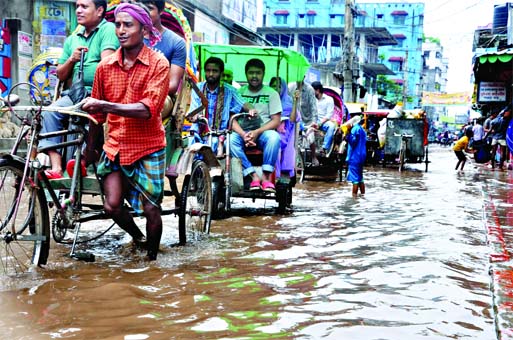
Staff Reporter :Thousands of people living inside the Dhaka-Narayanganj-Demra [DND] dam areas do not see an easy way out of the water-logging that makes their life unbearable in monsoon.Many roads, fields and other open spaces in the area went under ankle to waist-deep water because of the downpour, causing immense sufferings to the residents of the area.People living inside the DND embankment area have expressed dissatisfaction over the role of the Bangladesh Water Development Board [WDB], which is responsible to maintain the DND dam. Encroachment is also common here. Unauthorised structures, built by local influential over the years, also blocked natural flow of water and led to water-logging. Masuda Begum, a field worker of Sarulia Union Health and Family Welfare, trudges through water every day between home and work. Like all others living in the area, she accepts the suffering as no remedy is in sight.”Water-logging has become a regular feature in the whole DND area in monsoon. We are facing this every year, so we are used to this situation,” she said.There was no major rainfall in the last few days. But roads and open spaces in areas inside the DND dam, including Matuail, Konapara Pora Dogair, Mogholpara, Rasulpur, Dholesshar, Adarshapara, Sarulia, Dogair, Deillah, Munsibagh, Baghmara, Boxonagar, Sarulia Bahir Tengra, Kandapara and Mredhabari were seen under water even on Tuesday.The DND project was executed during 1962-68 as Flood Control Drainage and Irrigation [FCDI] project primarily to protect Dhaka and Narayanganj towns from floods, and to save croplands from overflowing rivers. It was then a part of an exclusive irrigation project aimed at achieving self-reliance in food grains production.But the area continued to develop as an unplanned residential area after the country’s independence, with lower middle income people buying land and building homes haphazardly.The trend gained pace after the 1988 flood, inviting more people inside the dam area. As a result most of the agricultural land was transformed into residential, small business or even heavy industrial zone without any plan.

